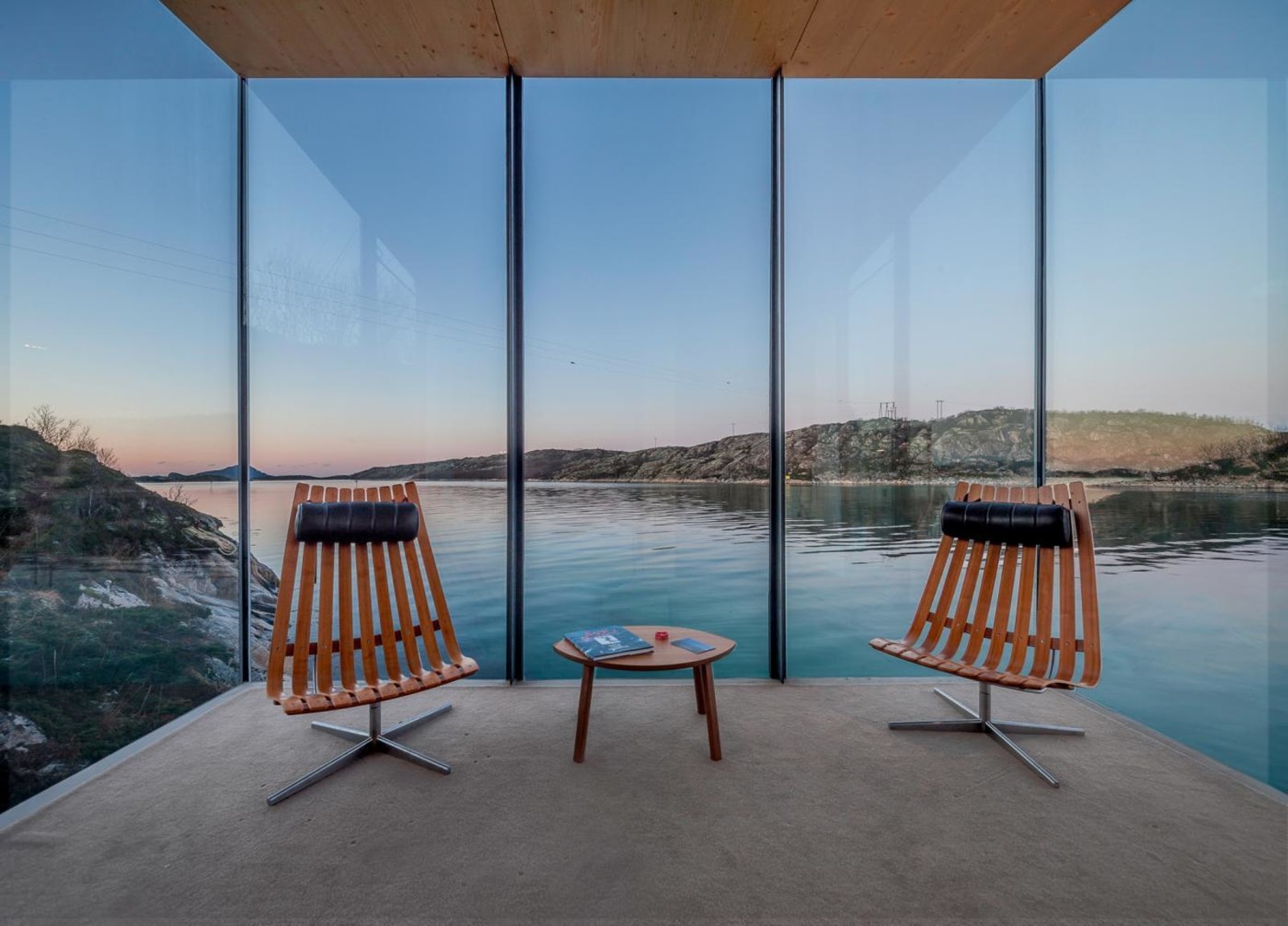Architectural photographer Steve King discovered Snorre Stinessen’s A+Award-winning cantilevered cabins on Manshausen Island Resort while planning a vacation last January. Preparing to travel with his girlfriend Luiza to catch a glimpse of the Northern Lights over the winter, Steve stumbled on a post that featured Stinessen’s Sea Cabins and immediately decided to make them a destination in their journey.
“Manshausen is far off the beaten path, even for Norway,” explains King. To get there he and Luiza first flew to Bodø, a town in the far north of the country. From there, they boarded a ferry to the small fishing village of Nordskot, where they were met by Børge Ousland, a polar explorer and owner of the sea cabins. “He took us the last kilometer to Manshausen, in a small, open-top fishing boat, under a clearing, -3 degrees Celsius and moonless, arctic night sky.”

© Steve King

The cantilevered huts sit along the coast of the Manshausen Island, their fully transparent verandahs looking toward the east. After Børge gave the pair an extensive tour of the cabins, Steve and Luiza sat in their assigned hut and waited for the sky to clear up. “Around 10 p.m., the clouds disappeared and we began to see the faint glow of the Northern Lights out on the horizon.”


© Steve King
After returning to the United States, King processed the images and sent them to Børge, who liked them so much that he invited him to return to the island as his guest and take more photos of the resort, particularly focusing on the interior of the cabins. “We decided to return in April before the crowds of summer, and so that we could still experience the aurora, up there, above the Arctic Circle.”

© Steve King

© Steve King
During this second trip, Steve and Luiza also met Snorre Stinessen, the Norwegian architect who originally designed the cabins. Snorre and his firm Stinessen Arkitektur were the proud recipients of four A+Awards, in the categories of Hotels & Resorts, Architecture + Cantilever and Architecture + Glass.
Reflecting on his first night on Manshausen, King emphasizes the extent to which the huts were “designed to embrace the landscape, the seascape and the skyscape of the island.” The architecture of Stinessen’s resort is minimal, and its most prominent element — the frameless, glass living room — complements the strategic placement of the site by offering awe-gazing views across the lake and into the skies of Northern Norway.


© Steve King
King defines the cabins as “slow architecture” for their ability to suspend the visitor between landscape and architecture. “They are architecture in real time, not the imagined time of your cell phone or your brain, but the real time of your body: your breath, your blood flow, your digestion.”
To illustrate this concept, he mentions a popular TV network in Norway called “slow TV” and which consists of placing a camera on the front of a moving locomotive to broadcast the entire train trip from Oslo to Trondheim. These nine hours of uninterrupted footage document every meter of the trip, going through stations and tunnels.

© Steve King

© Steve King
“The sea cabins are like slow TV. They mesmerize you with images of passing clouds, undulating water and the changing colors of land and sky,” he continues. “From inside and out, they draw you into them, as they dissolve between reflection and transparency.” The cabins are an architectural tool that pushes the visitor to pay attention to the real world that surrounds them and travel away from the stressful distractions of fast-paced environments that we interact with through technology in everyday life.
The photographs and the following video are the result of King’s experience in a cabin of Manshausen Island Resort. While the still images that accompany this article were all taken by him in January, the video was filmed over his second visit in April using a drone and a 3D gimbal stabilized video camera.
Having trouble viewing on mobile? Click here.
All photos in this article courtesy of Steve King Architectural Imaging.




